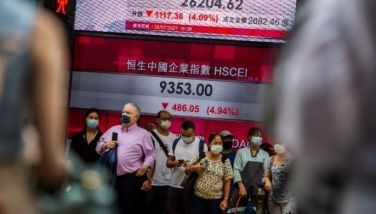Seeing through
In 1955, Malcom McLean, a trucking entrepreneur from North Carolina, USA, bought a steamship company with the idea of transporting entire truck trailers with their cargo still inside. He realized it would be much simpler and quicker to have one container that could be lifted from a vehicle directly on to a ship without first having to unload its contents. Use of this method of transport for goods grew steadily and in just five decades, containerships would carry about 60 percent of the value of goods shipped via sea. (http://www.worldshipping.org/about-the-industry/history-of-containerization/before-container-shipping).
So if the idea is not to unload the contents from the container to make transporting goods faster and more efficient, how do customs agencies determine their contents?
Cargo scanning or non-intrusive inspection (NII) refers to non-destructive methods of inspecting and identifying goods in transportation systems. It is often used for scanning of intermodal freight shipping containers. In the US, they are trying to achieve 100 percent cargo scanning and it is only when the content is suspicious that authorities do manual inspection.
Many years ago, the Philippines’ Bureau of Customs contracted SGS to provide accurate monitoring of incoming cargo from the source. Using computers, customs personnel knew exactly what the contents of each incoming container were without having to open them.
The system inconvenienced the smuggling syndicates and soon enough, the contract with SGS terminated.
Without cargo scanning, our customs had to resort to manual inspection. But only “suspicious†containers are inspected. The problem is corrupt customs personnel are “paid†on a per-container basis for them to just look the other way.
Without any means for efficient monitoring of containerized cargo from the source, large volumes of substandard steel products are being smuggled through our ports. This is a matter of grave concern for local manufacturers who have to contend with lower priced, but substandard products which not only do not pay taxes and duties but also do not undergo rigorous technical certification processes.
The widespread smuggling of steel products do not just undermine the viability of our own steel manufacturing industry. They render irrelevant the tough product standards imposed by our government. Worse, substandard steel products can pose serious danger to Filipino consumers.
Nearly all of the finished steel products being smuggled into the country enter through containerized shipping. But because of the weight of these steel products, the containers are only partially filled with steel. So other items like agricultural products, lightweight electronics, or even drugs, are loaded into these containers.
Maybe it is high time that our government invest in containerized cargo scanning equipment or contract somebody to do it. The benefits may far outweigh the cost, especially if importers or consignees are to pay the cost of having their cargo scanned and if this means plugging a loop hole in the system.
Free market
Time and again, higher electricity bills would lead to a public uproar.
Take for instance the recent Malampaya shutdown that caused electricity prices to spike to astonishingly high levels. Irate consumers, as expected, went to the Supreme Court to stop the implementation of the increased rates.
To better understand this, it is prudent to take a better look at the players in the nation’s power industry as defined under Republic Act 9136 or the Electric Power Industry Reform Act (EPIRA). There are three pivotal roles, each assigned to a different sector in the transfer of electricity: generation, transmission, and distribution.
Generation involves the production of electricity in power plants and is given to generation companies. Transmission involves the power grid, a large network of cables that bring electricity from the plants to distributors, with the transmission company ensuring that the grid is secure and reliable at all times. The distributor distributes the electricity to homes. It is also the entity that “buys†electricity, but passes on the costs to consumers.
The Malampaya gas project in Palawan supplied fuel to gas-fired plants in Luzon, namely Lopez-owned Sta. Rita and San Lorenzo power plants and Ilijan Power Plant. In turn, around 45 percent of Metro Manila’s requirement is sourced from the Lopez’s plants in Sta. Rita and San Lorenzo. Its shutdown meant that distributors would have to momentarily source their power elsewhere. That elsewhere was the WESM or the Wholesale Electricity Spot Market where electricity is traded on an hourly basis. WESM came up with prices based on bids from registered generation companies, supposedly to foster competition and keep energy prices low.
The generation costs are the result of WESM collecting bids and available power and arranging bids – from the most to the least viable – in a priority list called the Real-Time Dispatch (RTD). Distributors submit power demands and buy electricity from the market, supposedly without any idea of how much it would cost, since they would have no access to the RTD.
The rate increase was apparently due to the Therma Mobile (TMO) plant being allowed to operate under the bid it submitted, which was P62 per kilowatt hour (kWh), the highest allowable bid price on the market.
Somehow, no other plants were able to make more viable bids at that time, meaning TMO was the only available option for the WESM to place on the RTD when the need for the list arose.
Whatever the circumstances, it is clear that there is something to be said of the process which led to this situation, which, it must be noted, was approved by both the chairman of the Philippines Electricity Market Corp. (PEMC) – which governs the WESM – and the ERC, which needs to approve the WESM’s lists before prices are handed out to distributors.
For comments, email at [email protected]
- Latest
- Trending



























